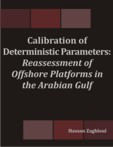Add abstract
Want to add your dissertation abstract to this database? It only takes a minute!
Search abstract
Search for abstracts by subject, author or institution
Want to add your dissertation abstract to this database? It only takes a minute!
Search for abstracts by subject, author or institution
Spectroscopic Investigation of a Repetitively-Pulsed Nanosecond Discharge.
by Benjamin T. Yee
| Institution: | University of Michigan |
|---|---|
| Department: | Nuclear Engineering & Radiological Sciences |
| Degree: | PhD |
| Year: | 2013 |
| Keywords: | Plasma; Spectroscopy; Pulsed Discharge; Simulation; Electron Energy Distribution; Nuclear Engineering and Radiological Sciences; Engineering |
| Posted: | |
| Record ID: | 2011050 |
| Full text PDF: | http://hdl.handle.net/2027.42/102337 |
This work reports on an investigation of a repetitively-pulsed nanosecond discharge (RPND) in helium over a range of 0.3-16.0 Torr. The discharge was studied experimentally via laser-absorption spectroscopy and optical emission spectroscopy measurements. In concert with the experimental campaign, a global model of a helium plasma was developed with the aid of particle in-cell simulations. The global model was then used to predict the population kinetics and emissions of the RPND. Synthesis of the results provided new data and insights on the development of the RPND. Among the results were direct measurements of the triplet metastable states during the excitation period. This period was found to be unexpectedly long at low pressures (less than or equal to 1.0 Torr), suggesting an excess in high-energy electrons as compared to an equilibrium distribution. Other phenomena such as a prominent return stroke and additional energy deposition by reflections in the transmission line were also identified. Estimates of the electric field and electron temperatures were obtained for several conditions. Furthermore, several optical methods for electron temperature measurement were evaluated for application to the discharge. Based on the global model simulations, the coronal model was found to apply to the line ratio of the 3^3S-2^3P and 3^1S-2^1P transitions, however further work is needed to ascertain its applicability to experimental discharges. These results provide new insight on the development of the repetitively-pulsed nanosecond discharge. Specifically, they reveal new information about the excited state dynamics within the discharge, the non-equilibrium nature of its electrons, and several avenues for future studies. This study extends the present understanding of repetitively-pulsed discharges, and advances the knowledge of energy coupling between electric fields and plasmas.
Want to add your dissertation abstract to this database? It only takes a minute!
Search for abstracts by subject, author or institution


|
Predicting the Admission Decision of a Participant...
|

|
Development of New Models Using Machine Learning M...
|

|
The Adaptation Process of a Resettled Community to...
A Study of the Nubian Experience in Egypt
|

|
Development of an Artificial Intelligence System f...
|

|
Theoretical and Experimental Analysis of Dissipati...
|

|
Optical Fiber Sensors for Residential Environments
|

|
Calibration of Deterministic Parameters
Reassessment of Offshore Platforms in the Arabian ...
|

|
How Passion Relates to Performance
A Study of Consultant Civil Engineers
|